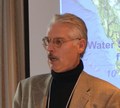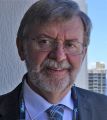BOOK LAUNCH: “downstream: reimagining water” envisions a new water ethic

“The book ‘downstream: reimagining water’ is an anthology,” explains Michael Blackstock. “It brings together the perspectives of artists, writers, scientists, scholars, environmentalists, and activists. It does this by exploring the key roles that culture, arts, and the humanities play in supporting healthy water-based ecology. My chapter is titled Interweaving Water. It outlines four steps toward transforming sovereign knowledge into collaborative knowledge: (1) humility, (2) transcending, (3) interweaving, and finally (4) transformation. I illustrate this process using the theory of Blue Ecology. Curiosity about other cultures draws us into a better understanding, and allows us to contrast and compare two worlds. The product of curiosity is an analysis whereby comparison and contrast enable the interweaving process.”









